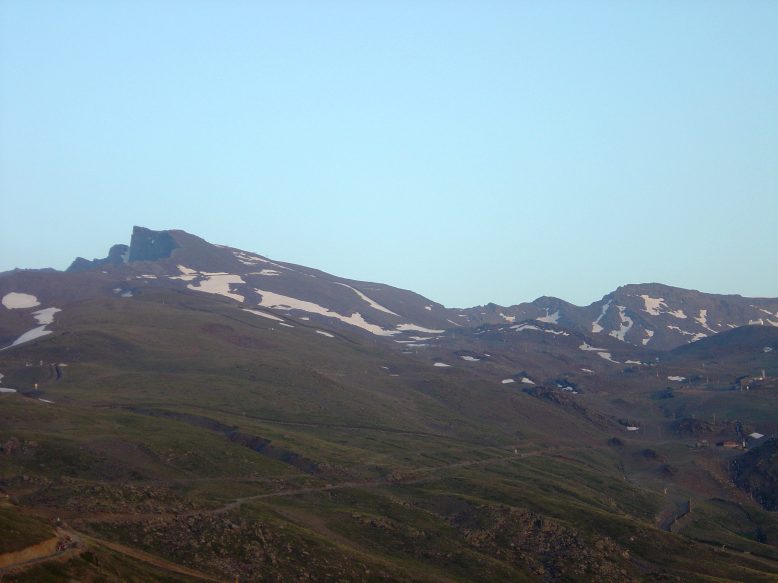
Already in 1932 the species was described for the first time by Lindberg, but incorrectly ranked as a subspecies of P. vulgaris. Only in 1962 Casper recognized the uniqueness of the populations growing in the Sierra Nevada and ranked them in his famous monography as a distinct species under the denomination P. nevadensis. In literature it is mentioned that the species grows in altitudes between 1400 m and 2600 m, but I have found plants also above 3000 m. The typical habitat of P. nevadensis are wet meadows dominated by sedges and mat-grass, in Spanish called "borreguiles", where the plants grow in wet peaty soils at the run out of small lakes or along small streams, which form in the barren landscape some green islands.
P. nevadensis begins to form its first summer leaves end of May. The leaves can achieve a size of up to 4,5 cm in length and up to 2,5 cm in width with a leaf margin, that is upturned. Plants do grow most often together in groups. Flowering time begins end of July and ends normally beginning of August. The corolla of the flower is two-lipped. At the base the lobes are of a violet colour while the outer part of the lobes shows a whitish to pale-violet coloration. The middle lobe of the lower lip is on the upper side covered with white hair and at the base of the lobe of a light yellow colour. The tube is funnel-like shaped and shows a dark violet coloration. The spur has a cylindrical form and most often it is slightly turned downwards.
At least at south facing locations of the Sierra Nevada the plants grow in almost direkt sunlight, only partly shaded by low growing sedges (Carex sp.). In addition to the direkt sunlight the plants are exposed to a very high ultraviolet radiation due to the high altitude.
The Sierra Nevada in Southern Spain is beside the Alps the highest mountain chain in Europe and the peak of the Mulhacén with an altitude of 3482 m is the highest mountain on the Iberian peninsula. The mountain chain was formed in the geological era of trias by the collision of the African tectonic plate and the Iberian mainland. The extension of the Sierra Nevada is 78 km from the east to the west. In the high peak area there are predominantly metamorphic rock formations occuring (like schist, quarzite or gneiss).
The climate in the Sierra Nevada is very diverse and due to the geographic position formed by very extreme and unique conditions. The climate in the high peak area is a so called cold desert climate, characterized by 9 months of snow cover and during the "snow free" period from June to September by high daily and cold night temperatures. In this environment there have been developed a lot of different plant species, that only can be found in the Sierra Nevada, among these P. nevadensis (span.: tiraña de Sierra Nevada).